Cheongchoho Lake Park (청초호 호수공원)
18.7 Km 0 2024-04-08
140 Expo-ro, Sokcho-si, Gangwon-do40
Cheongchoho Lake Park is where the 1999 International Tourism & Culture Expo was held. Benches are scattered around the park for resting in the shade of trees. By the natural lake is a walking deck for enjoying tulips in spring, marinas in summer, chrysanthemums in fall, and snow in winter. From the top of the Expo Tower, one can see a panoramic view of Cheongchoho Lake, Cheongchoho Lake Park, the East Sea, and even Jodo Island. On the other side, Ulsanbawi Peak and Dalmabong Peak of Seoraksan Mountain come into view.
BENIKEA Hotel Mountain & Ocean Daepohang (베니키아 호텔 산과 바다 대포항)
18.7 Km 5925 2020-05-07
3691, Donghae-daero, Sokcho-si, Gangwon-do
+82-33-635-6644
Located in Sokcho, Gangwon-do, the Benikea Hotel Mountain & Ocean Daepohang guest rooms are famous for their views facing the deep blue East Sea. In addition, another must-visit attraction in Sokcho, Seoraksan Mountain, is not too far away which makes this hotel a convenient destination to stop and relax before or after mountain climbing.
Naksansa Temple (낙산사)
18.8 Km 61805 2022-12-22
100, Naksansa-ro, Yangyang-gun, Gangwon-do
+82-33-672-2447
This ancient temple was built in the 11th year of King Munmu’s reign of Silla (671) by the Buddhist monk Uisang. Naksansa Temple is one of the foremost sights of Yangyang, and one of the most historic sites in the region. Along with Ganghwa’s Bomunsa Temple and Namhae’s Boriam Hermitage, it is said to be one of the three centers of the cult of Avalokitesvara in Korea. Its handsome view overlooking the East Sea has earned it a spot in the Eight Sights of Gwandong (eight famous sights in Yeongdong region of Gangwon-do), documented throughout the ages in many classic literature and poetry. Today’s Naksansa Temple is a product of many restorations and expansions, and has many examples of cultural heritage within its walls. There is a 16 meter-tall statue of the Avalokitesvara Bodhisattva to Uisangdae, a pavilion built to overlook the sunrise over the East Sea on a coastal cliff, Hongnyeonam Hermitage, built over the crashing waves, Seven-story Stone Pagoda of Naksansa Temple, Yangyang (Treasure No. 499), a Joseon-era pagoda with Goryeo-era style, and Stupa, Stele, and Reliquaries of Naksansa Temple, Yangyang (Treasure No. 1723), including a number of sarira. A mountain fire in 2005 resulted in the loss of 20 buildings, including the building that housed its bronze bell (formerly Treasure No. 479 of Korea). The temple also operates templestay programs available through its website.
Chilsung Boatyard (칠성조선소)
18.9 Km 0 2023-02-03
45, Jungang-ro 46beon-gil, Sokcho-si, Gangwon-do
Chilsung Boatyard is a cafe remodeled from an old boatyard located near Cheongcho Lake Park. The facility was run as a boatyard from 1952 to 2017 before reopening its doors as a cafe in 2018. The cafe consists of four spaces - Salon, Museum, Playscape, and Open Factory - with Salon being the cafe. It sells self-roasted coffee, hot chocolate, ice cream, sparkling water drinks, and many other beverages. The outdoor tables of the cafe are connected to Cheongchoho Lake, which attracts many families. There are traces of the old boatyard still remaining throughout the venue.
Sokcho Marina (속초마리나)
18.9 Km 0 2024-04-08
106 Cheolsae-gil, Sokcho-si, Gangwon-do
Sokcho Marina is a great place to visit with family members in the maritime city of Sokcho. Looking at the East Sea is lovely, but sailing through the blue sea is even more enjoyable. Sokcho Marina has a 12-seater cruise yacht suited for family and friends as well as a sailing yacht where passengers can soak up the romantic mood. By the dock is Cafe Marina where one can enjoy the view of yachts anchored in the bay through the window. The cruise route starts from Cheongchoho Lake and passes by Seorakdaegyo Bridge and Sokcho Beach, and turns around Jodo Island, one of the eight scenic sights of Sokcho, before returning to the dock.
Jeongin Hoesikdang (정인회식당)
18.9 Km 18009 2024-02-16
32 Naksansa-ro, Ganghyeon-myeon, Yangyang-gun, Gangwon-do
Jeongin Hoesikdang, situated near Naksan Beach in Yangyang, specializes in mul hoe (cold raw fish soup) and saengseon jjigae (fish jjigae). It prides itself on using fresh fish, sourced from nearby ports and used within a day of purchase. The restaurant's signature dish is sanureok maeuntang (spicy rockfish stew). Other popular menu items include modeum mul hoe (assorted cold raw fish soup), seongge albap (sea urchin roe rice), and ojingeo hoe deopbap (raw squid bibimbap). Additionally, soups like gomchi tang (spicy moray eel stew) and haemul tang (spicy seafood stew) are also highly recommended. For guests interested in local attractions, the scenic Naksansa Temple and Naksanhaebyeon Beach are nearby.
Naksan Provincial Park (낙산도립공원)
19.0 Km 10954 2018-01-25
59, Haemaji-gil, Yangyang-gun, Gangwon-do
+82-33-670-2518
Naksan Provincial Park takes up 24km of shoreline in Yangyang, Gangwon-do. The park is centered on Naksansa Temple and Naksan Beach, but includes Osan, Dongho, and Hajodae Beaches, as well as many lakes and cliffs. The park is a great place to learn about Korean culture, including Buddhist culture at Naksansa Temple and other cultural relics, and the shoreline cliffs of pine trees. The park is a popular attraction in the summer, when visitors can swim in the ocean and play in the sand along the coast.
Geumgangsan Daegehoetjip (금강산대게횟집)
19.0 Km 169 2021-03-20
8-5, Haemaji-gil, Yangyang-gun, Gangwon-do
+82-33-671-5207
A restaurant that sells a variety of seafood. The best menu at this restaurant is king crab. This seafood restaurant is located in Yangyang-gun, Gangwon-do.
Chungchosoo Mul Hoe (청초수물회)
19.0 Km 12284 2024-02-16
12-36 Expo-ro, Sokcho-si, Gangwon-do
033-635-5050
Situated by Cheongchoho Lake in Sokcho, Chungchosoo Mul Hoe is renowned for its Haejeon mul hoe (cold raw fish soup with sea cucumber and abalone). The unique soup base is crafted by blending beef bone broth with traditional sauces, which is then aged for flavor enhancement. This rich soup is combined with an assortment of ingredients such as sliced raw fish, abalone, sea cucumber, sea squirt, octopus, and flying fish roe. Other popular menu items include seop guk, a mussle-based soup; seonggeal bibimbap, a sea urchin roe bibimbap; and ojingeo sundae, a specialty dish where a squid is stuffed with beef and vegetables.
Uisangdae Pavilion (낙산사 의상대)
19.1 Km 16142 2021-04-12
100, Naksansa-ro, Yangyang-gun, Gangwon-do
+82-33-672-2447
This pavilion is located on a seaside cliff on the way from Yangyang’s Naksansa Temple to Gwaneumgul Cave of Hongnyeonam Hermitage. The word “dae” in Uisangdae refers to a building built at a vantage point for areas with beautiful scenery. Indeed, the view of the East Sea and the coast from Uisangdae Pavilion awarded its recognition as one of the Eight Sights of Yangyang, and a must-visit place for all visitors to Naksansa Temple. Jeong Cheol (pen-name: Songgang), a famed scholar and writer of the poem Song of Diamond Mountains, chose the pavilion as one of the Eight Sights of Gwandong, and the pavilion is today one of the popular sites for sunrise-viewing on the east coast of Korea. Together with Hongnyeonam Hermitage, it is designated as the Scenic Site No. 27 of Korea under the name “Uisangdae Pavilion and Hongnyeonam Hermitage of Naksansa Temple, Yangyang.” Uisangdae is named after Uisang, a respected Silla-era Buddhist monk who is said to have founded this temple in 671 (11th year of King Munmu’s reign of Silla), and many stories of his deeds can still be found in the temple. For instance, Uisangdae is said to be the site where he meditated before founding Naksansa Temple at its present site. Today’s pavilion was restored to its present hexagonal form in 1995.

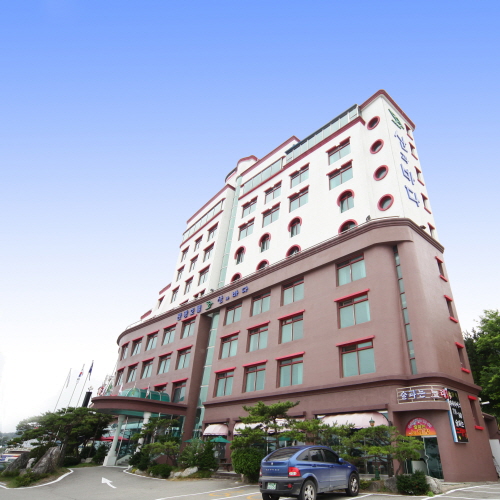
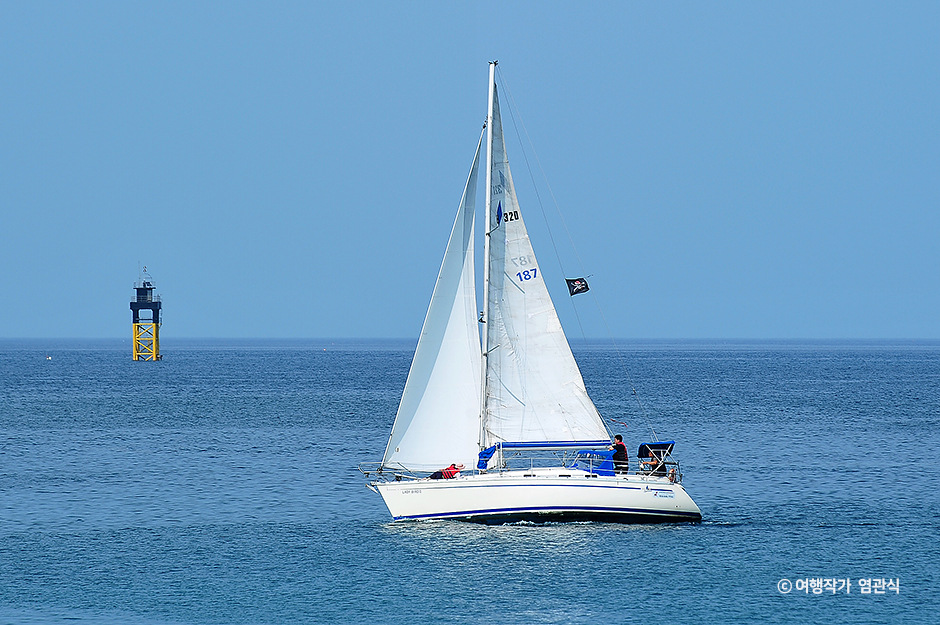
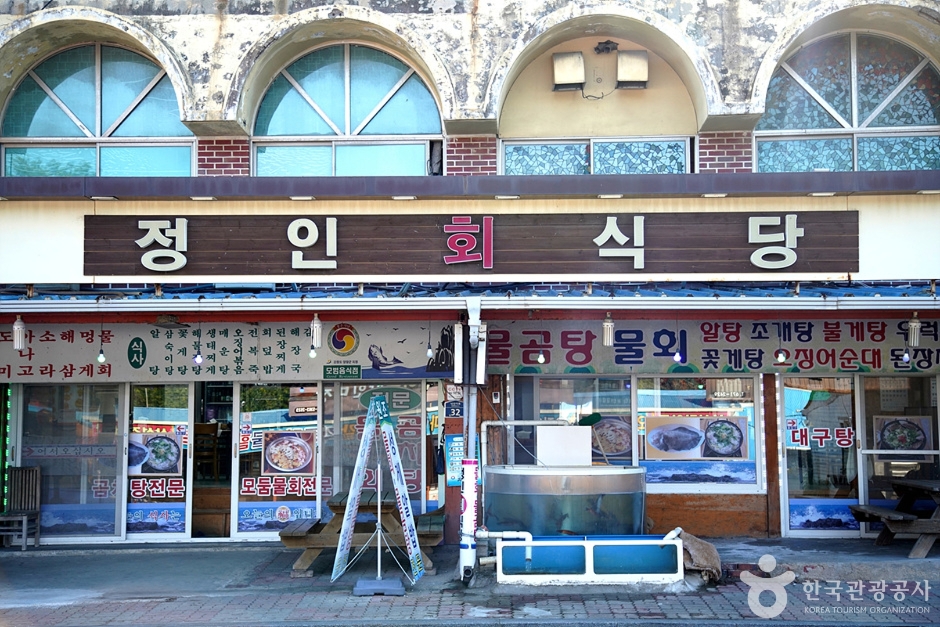
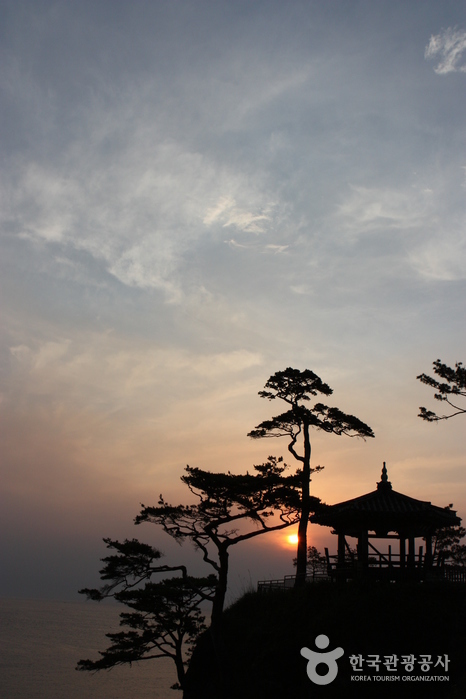
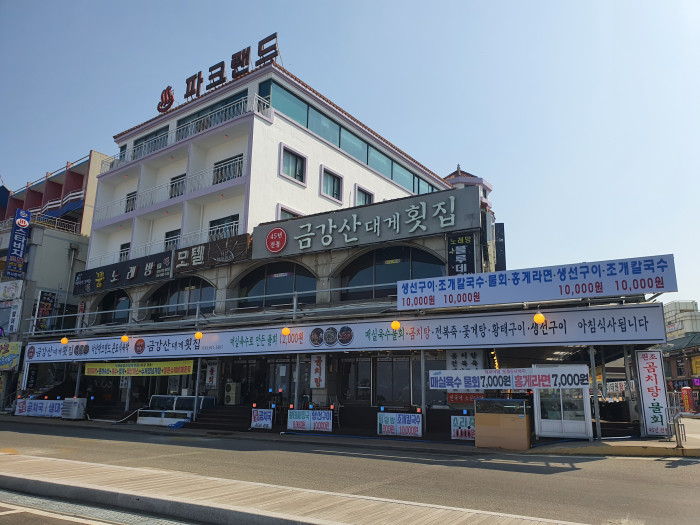
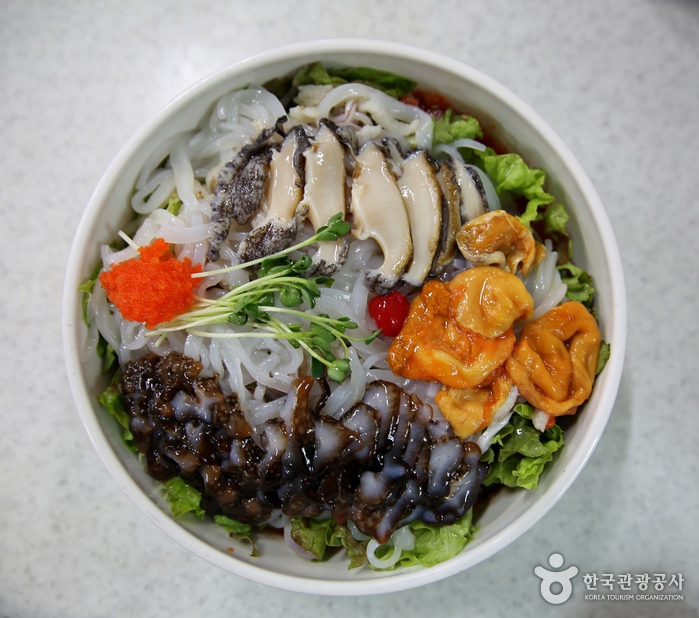
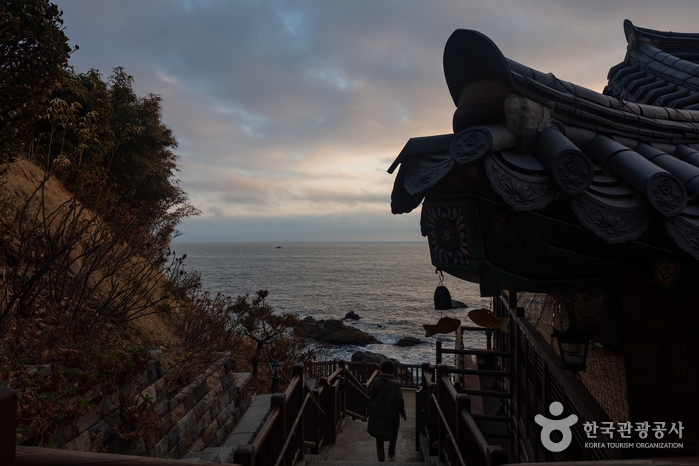
 English
English
 한국어
한국어 日本語
日本語 中文(简体)
中文(简体) Deutsch
Deutsch Français
Français Español
Español Русский
Русский